 |
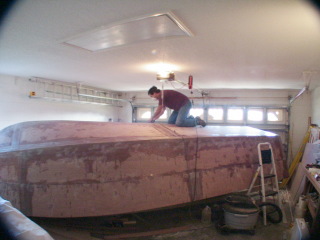 |
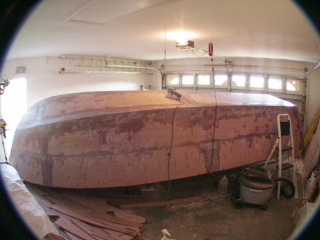 |
| Today I spent most of my time working on the boat sanding rough spots along the fiberglass taped seams. |
I was able to climb on top of the boat to sand around the keel. |
The mess was vaccuumed up with a shop vac after I was done and I am now ready to lay fiberglass fabric on the bottom
and cut it to shape. |
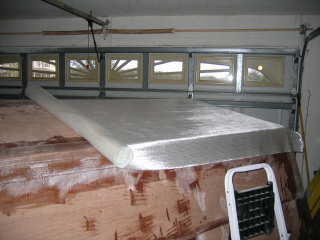 |
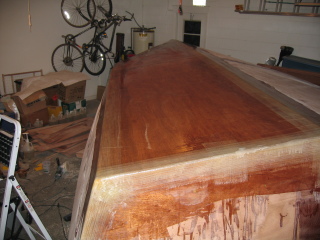 |
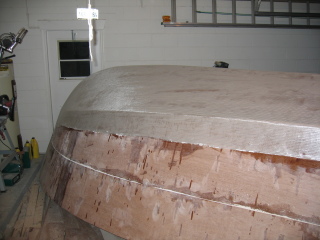 |
| The biaxial fabric is unrolled on the bottom. The fabric must overlap the chine and keel by 6". After the overlap is
measured the fabric must be trimmed. |
Once the fabric is trimmed to fit the hull, it is removed and epoxy is applied to the bottom. |
The fabric is unrolled once again on the bottom and moved around until it is in place. |
 |
 |
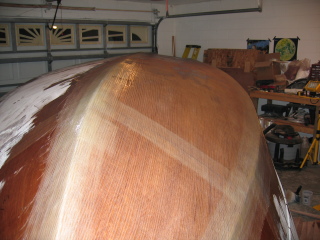 |
| The fabric is smoothed out by hand until it appears flat and without any wrinkles. |
Quite a bit of epoxy is soaked up by the fabric, this explains why I had to order 22.5 gallons of it. |
Wetted out fabric as seen from the bow. |
 |
 |
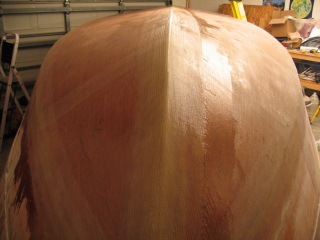 |
| After sanding rough areas on the fabric overlap and along the chine, I repeated the previous process and cut another
piece of fiberglass to fit the bottom. I soaked the bottom with epoxy and then put the fabric in place. |
Here is a view down the keel from the stern after the bottom is now glassed completely with 1 layer of biaxial fabric. |
Another view down the keel from the bow showing the first layer of glass fabric on the hull. I think I used up about
a gallon of epoxy (resin+hardener) for each bottom section. |
 |
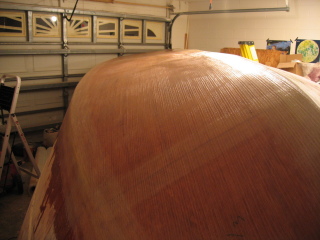 |
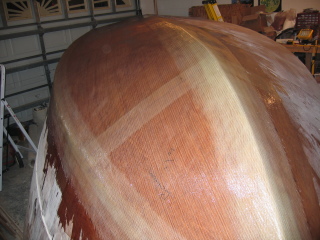 |
| A view of the bow showing the bottom lamination. |
Showing the newly glassed bottom panel. |
Another view of the fresh glassing. |